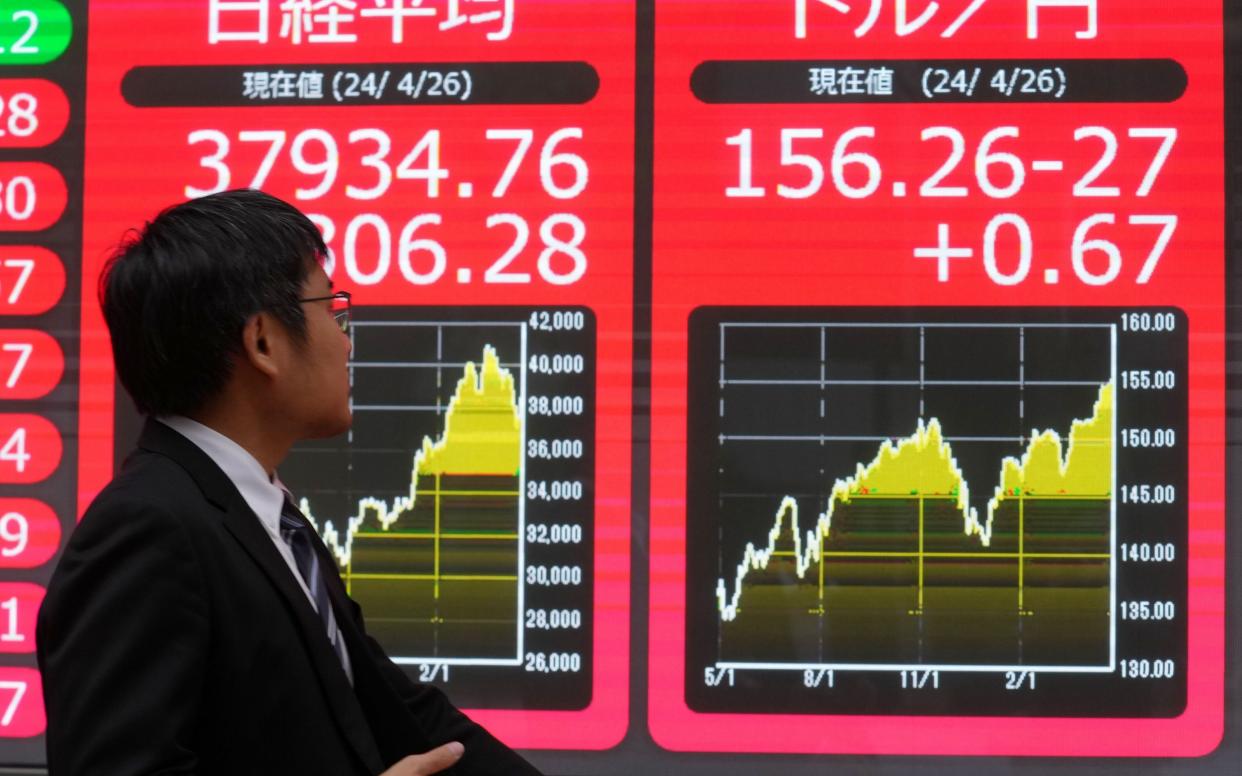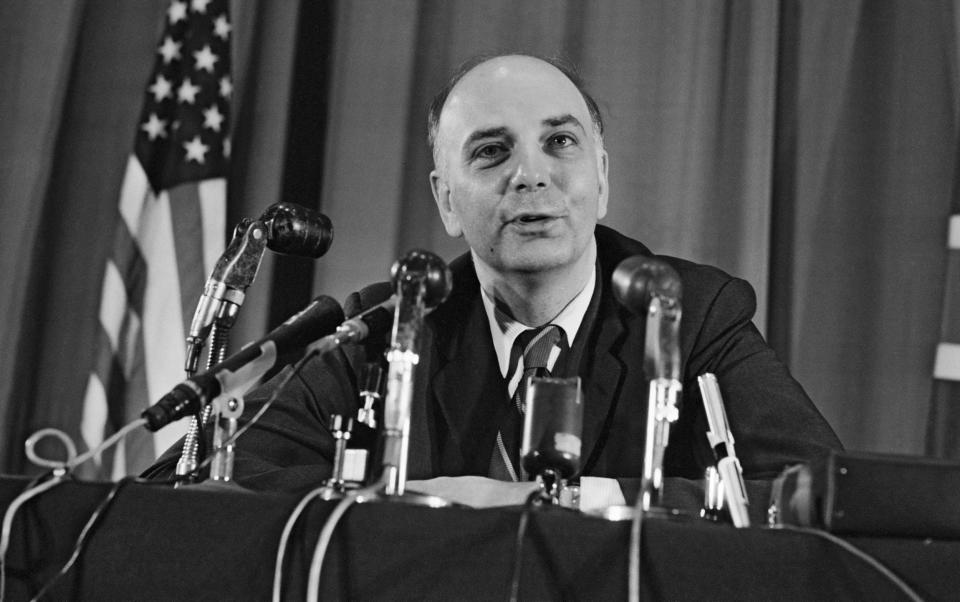A rising dollar spells trouble for investors

The FTSE 100 stands at an all-time high. Japan’s Nikkei 225 index recently pushed into record territory after 34 years. Neither the British nor Japanese economies are exactly booming, so what is driving their stock markets’ outperformance? What they have in common is an exposure to the mighty US dollar.
Big UK and Japanese companies are particularly sensitive to the US currency for related but slightly different reasons. The FTSE 100 index has lots of dollar earners, operating in industries like mining, and oil and gas, whose products are priced in the US currency. The earnings of Shell and BP are worth a whole lot more to a British investor when they are translated back into sterling at $1.25 than they were at $2 to the pound before the financial crisis.
Japan, meanwhile, is a net exporter whose products become more attractive when the dollar buys more yen. Ten years ago, a dollar secured just 80 yen; today it is twice as many. Those Japanese machine tools and cars suddenly look to be a bargain as the dollar appreciates.
And how the dollar is rising. My daughter is on holiday in Japan at the moment, and dispatches from Tokyo refer to how “insanely cheap” the country is. My recent visit to New York, on the other hand, was notable for the eye-wateringly expensive prices in the Big Apple. Unsurprisingly, the Japanese have decided that Hawaii is beautiful but way too expensive.
So why is the dollar so strong today? Three reasons. First, the US economy is on fire. It has shrugged off the last two years’ rising interest rates, creating new jobs, increasing wages and keeping a lid on unemployment. Money follows growth.
The second reason is those interest rates, which are showing no signs of pivoting lower anytime soon as inflation remains stubbornly above target. Higher yields attract yet more global money flows. Finally, the dollar is a safe haven. Always has been. And today’s worrying geopolitics make the greenback look ever more like a port in the storm.
This all feels eerily familiar. When I went to study in America in 1985, my university teaching assistant’s stipend felt like a king’s ransom at the then-exchange rate of about $1.20 to the pound. A dollar was worth 80p then. Five years earlier it would have bought just 40p.
Half a decade of tight monetary policy under the Fed’s determined chair, Paul Volcker, and loose fiscal policy in President Ronald Reagan’s first term had pushed up bond yields and attracted global capital flows. Then as now, you wanted to be earning dollars, not trying to buy them.
At first, the US government was in favour of a strong dollar. It made Volcker’s job of getting on top of inflation that bit easier. But American industry was suffering, the trade deficit was soaring, and Congress was drawing up protectionist legislation to backstop domestic manufacturers. The stage was set for the world’s finance ministers to get together in New York’s Plaza Hotel and thrash out a co-ordinated devaluation of the dollar.

Currency interventions have fallen out of favour since the 1980s for good reason. They tend to deliver unintended consequences. In the case of Japan, the success of the Plaza Accord led to a strengthening of the yen, which pushed the country towards recession, triggering massive monetary and fiscal expansions that in turn fuelled a disastrous asset price bubble. The bursting of that property and stock market boom scarred Japan for more than 30 years.
The strength of the dollar may feel like a good thing for UK investors today, but it comes at a cost. In theory it can balance unequal global growth, giving European and Asian exporters an edge in the strong US market. In practice it can make things worse. It raises the cost of borrowing in countries that are obliged to borrow in dollars and so squeezes global credit. The higher cost of servicing debts can easily outweigh the benefit of more competitive exports.
But the world may have to get used to a resurgent dollar. One or more of a handful of things would be required to reverse the direction of travel for global currencies. A coordinated intervention along the Plaza lines would help, but we are a long way off that today. Last week’s attempt by the Japanese authorities to offload dollars had a short-term impact on the exchange rate but without global support it is a sticking plaster policy.
Strong growth outside of America would help to narrow the interest rate differential that is likely to open up this year and next. But that looks unlikely, as this week’s UK GDP figures are likely to demonstrate. The UK and Europe will cut rates before the Fed does.
Cheaper energy would help reduce America’s advantage over the rest of the developed world, where it is unique in being a major exporter and so a beneficiary of a higher oil price. However, it is in too many countries’ interests to keep the price of crude where it is. Finally, easing wage pressures would give the Fed cover to cut interest rates. But historically low unemployment makes that seem unlikely.
Owning US assets could make sense in the current environment. Higher growth, higher yields and a rising currency offer UK-based investors several routes to a profitable investment. But high valuations and the requirement for earnings to continue growing in the face of higher for longer interest rates mean there are risks too.
A safer way to play a strong dollar could be to bulk up on the out-of-favour UK stock market. There’s no currency risk, we have an in-built exposure to dollar earnings and there’s an increasing chance that the out-of-favour company you have invested in will be snapped up by a cash-rich US predator.
Tom Stevenson is an investment director at Fidelity International. The views are his own


